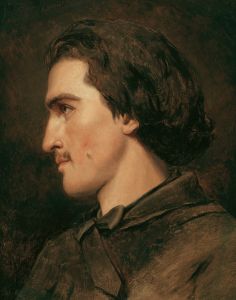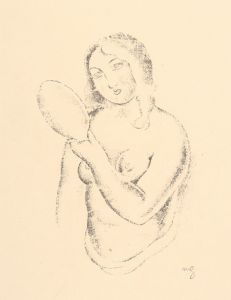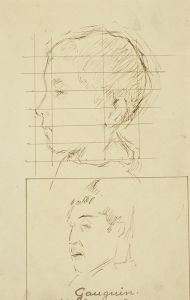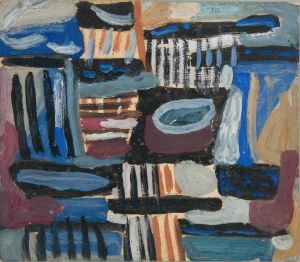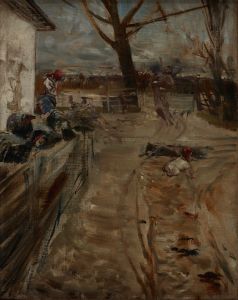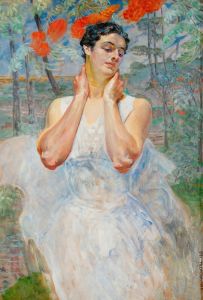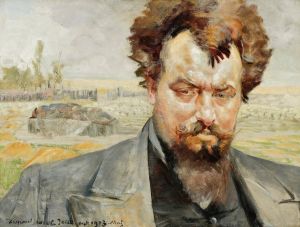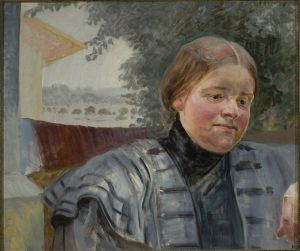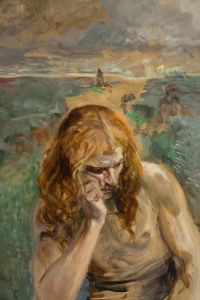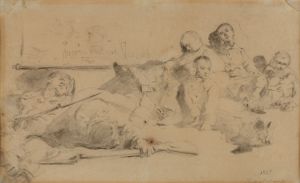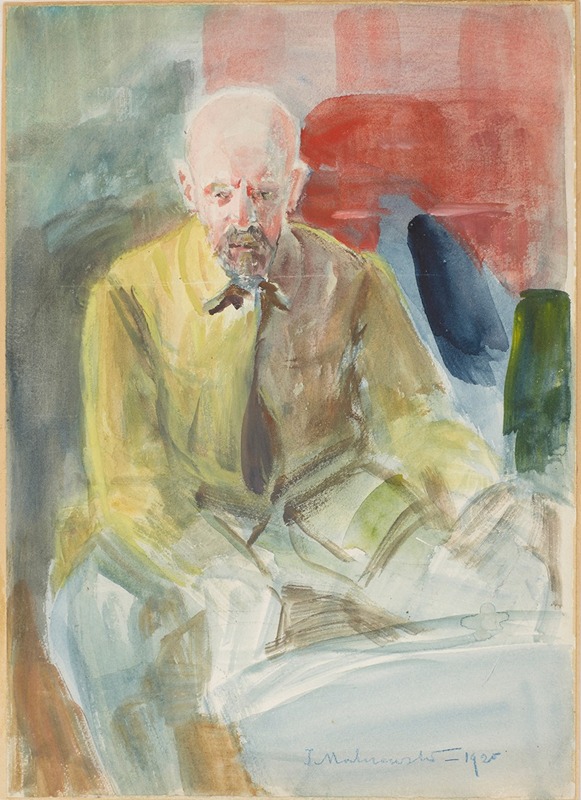
Self-portrait
A hand-painted replica of Jacek Malczewski’s masterpiece Self-portrait, meticulously crafted by professional artists to capture the true essence of the original. Each piece is created with museum-quality canvas and rare mineral pigments, carefully painted by experienced artists with delicate brushstrokes and rich, layered colors to perfectly recreate the texture of the original artwork. Unlike machine-printed reproductions, this hand-painted version brings the painting to life, infused with the artist’s emotions and skill in every stroke. Whether for personal collection or home decoration, it instantly elevates the artistic atmosphere of any space.
Jacek Malczewski, a prominent Polish painter associated with the Symbolist movement, is renowned for his evocative and often introspective self-portraits. One of his notable works in this genre is "Self-portrait," which exemplifies his unique approach to self-representation and his broader artistic themes.
Born in 1854 in Radom, Poland, Malczewski was a pivotal figure in Polish art, known for his ability to intertwine national themes with personal introspection. His self-portraits are particularly significant as they offer insight into his complex personality and the cultural context of his time. Malczewski's work often reflects the socio-political climate of Poland, a country that was partitioned and lacked independence during much of his lifetime. This historical backdrop is crucial to understanding the depth and symbolism present in his art.
In "Self-portrait," Malczewski employs a style that is both realistic and symbolic, a hallmark of his artistic approach. The painting captures not only his physical likeness but also conveys a deeper psychological narrative. Malczewski often used his self-portraits to explore themes of identity, mortality, and the role of the artist. His gaze in the painting is introspective, suggesting a contemplation of his own existence and the world around him.
The composition of the self-portrait is meticulously crafted, with attention to detail that highlights Malczewski's technical skill. The use of color and light in the painting is deliberate, contributing to the overall mood and symbolism. Malczewski often incorporated elements from Polish folklore and mythology into his work, and while "Self-portrait" is more focused on his personal identity, it still resonates with the cultural and historical influences that permeate his oeuvre.
Malczewski's self-portraits are also notable for their exploration of the artist's role in society. During his lifetime, Poland was undergoing significant cultural and political changes, and Malczewski's work reflects his engagement with these issues. His self-portraits can be seen as a dialogue between the artist and his environment, where he positions himself as both an observer and a participant in the broader narrative of Polish history.
Throughout his career, Malczewski produced numerous self-portraits, each offering a different perspective on his evolving identity and artistic vision. These works are characterized by their emotional depth and the complexity of their symbolism. "Self-portrait" is a testament to Malczewski's ability to convey profound meaning through the depiction of his own image, making it a significant piece in the study of Polish art and Symbolism.
Jacek Malczewski passed away in 1929, but his legacy continues to influence Polish art and culture. His self-portraits remain a subject of study for their rich symbolism and the insight they provide into the mind of one of Poland's most important artists. Through works like "Self-portrait," Malczewski has left an indelible mark on the art world, offering a window into the soul of an artist deeply connected to his national identity and personal introspection.





